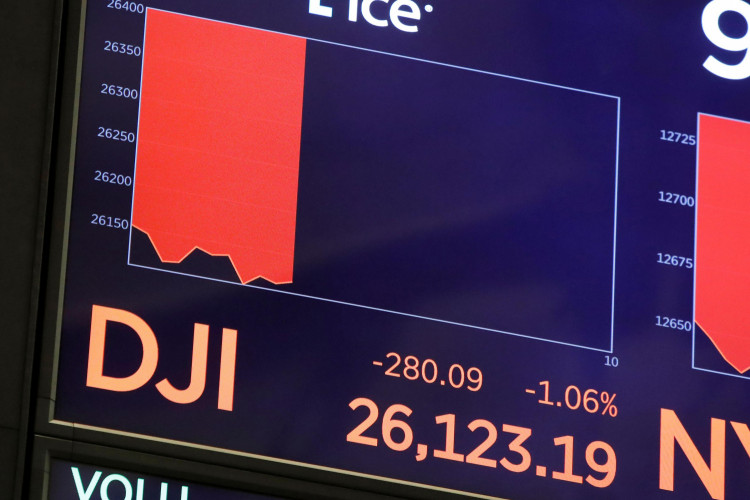Dismal trade numbers and other weak economic indicators have sent the Dow Jones Industrial crashing over 300 points on opening bell, barring a badly needed advance early Wednesday.
A look at figures at the ISM Manufacturing for the current month showed it dropped almost 8.1 to a new ten-year low. Analysts expected for 50, a rise from 49 last month. A reading below 50 indicates contraction.
This is the consecutive month that it hit under 50, suggesting the continued friction between the US and China in the trade arena is affecting the sector. The DJIA lost 1.2 percent, the S&P 500 retreated one percent and the NASDAQ shed 0.8 percent.
Small caps monitored by the Russell 2000 was down the most with 1.6 percent. Volume ballooned on the NASDAQ and New York Stock Exchange compared to the same time late Monday.
The steep decline pushed the DJIA near a test level to a 50-day moving average, a figure the index has maintained above since the start of the month. The S&P 500 adjusted its 50-day line, while the NASDAQ kept its pace for a fourth consecutive close below this line.
The DOW, Cisco Systems, and 3M emerged as the biggest decliners, off more than 4 percent each. Chevron, Caterpillar, and McDonald's were among five big companies that took a beating of over 2 percent apiece.
McDonald's made a gap down but remained near 210 within a trading region the stock has been stuck during the last three weeks. The food chain currently hovers on a flat range with a 222 possible buy point. Caterpillar moved from a rally to a drop under its downward trajectory of the 50-day line.
Of the 30 major companies in the Dow Jones index, only four steered clear of a sell-off. Apple Inc and Visa had the most impressive advance: 0.6 percent and 1.5 percent each. Visa has consolidated under the 50-day trajectory in the last four weeks after it recovered from a 184.16 buy point from an unchanged base.
The telecoms, industrials, machinery and investment sectors led the downside in IBD's industry grouping. Gold mining firms, food, and medical care were among the few that stalled the decline.
Meanwhile, a survey of manufacturing purchasing managers indicated the sector collapsed for the second straight month, its weakest since 2009.





